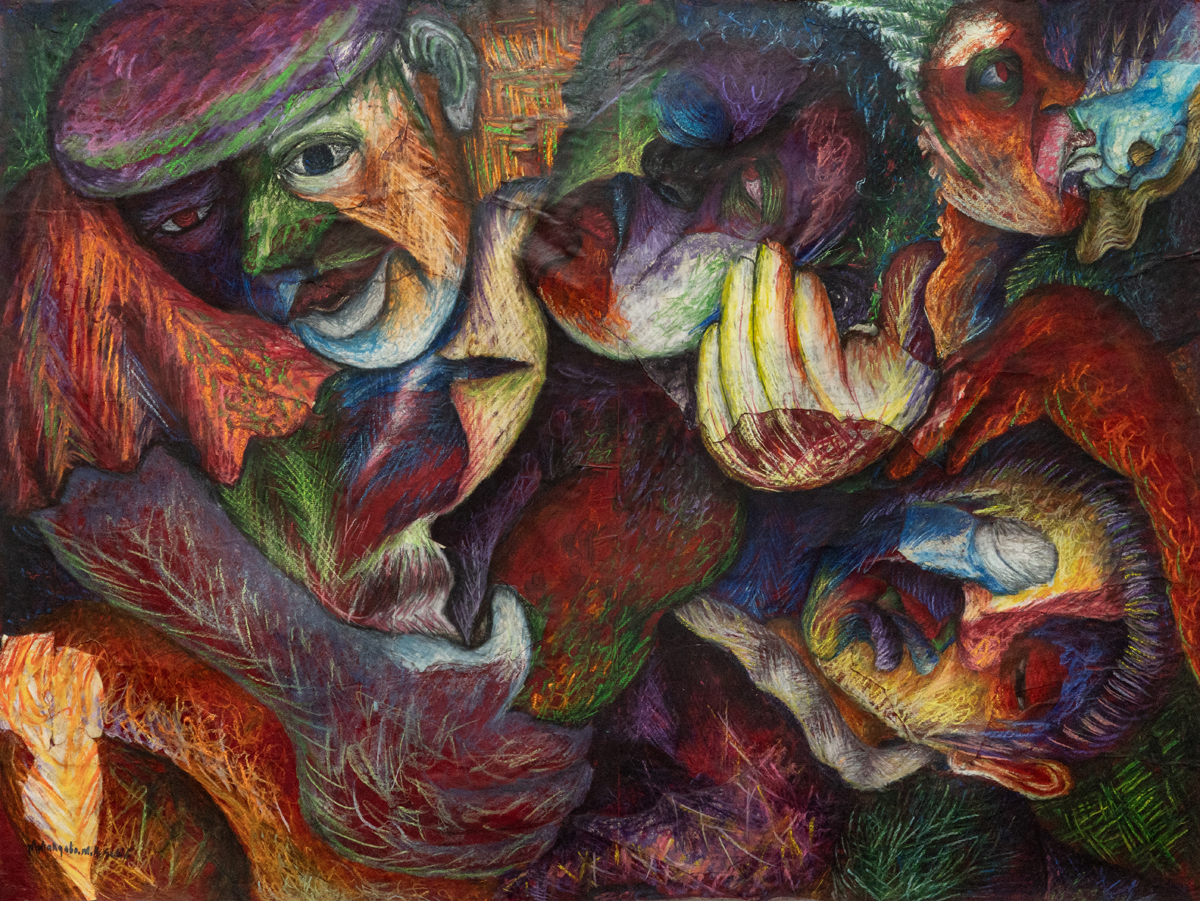In 1991, acclaimed South African artist Helen Sebidi’s artworks were presumed stolen in Sweden. Three decades later, a caretaker at the residential college where they disappeared found them in a ceiling cupboard, still in their original packaging.
While her mother earned a living as a domestic worker in Johannesburg, Mmakgabo Helen Sebidi was raised in the countryside by her grandmother, from whom she learned the traditional crafts of mural painting and pyro engraving of calabashes. As a teenager Sebidi had several short spells as a domestic worker herself, and it was while she was employed by the Petsches that Sebidi was first encouraged to pursue her artistic talent.
Helen Sebidi took art classes at Dorkay House and at the Katlehong Art Centre. She experimented with abstract expressionist techniques at the Alexandra Art Centre with Ilona Anderson, at the Thupelo Workshops initiated by David Koloane, and with Bill Ainslie at the Johannesburg Art Foundation.
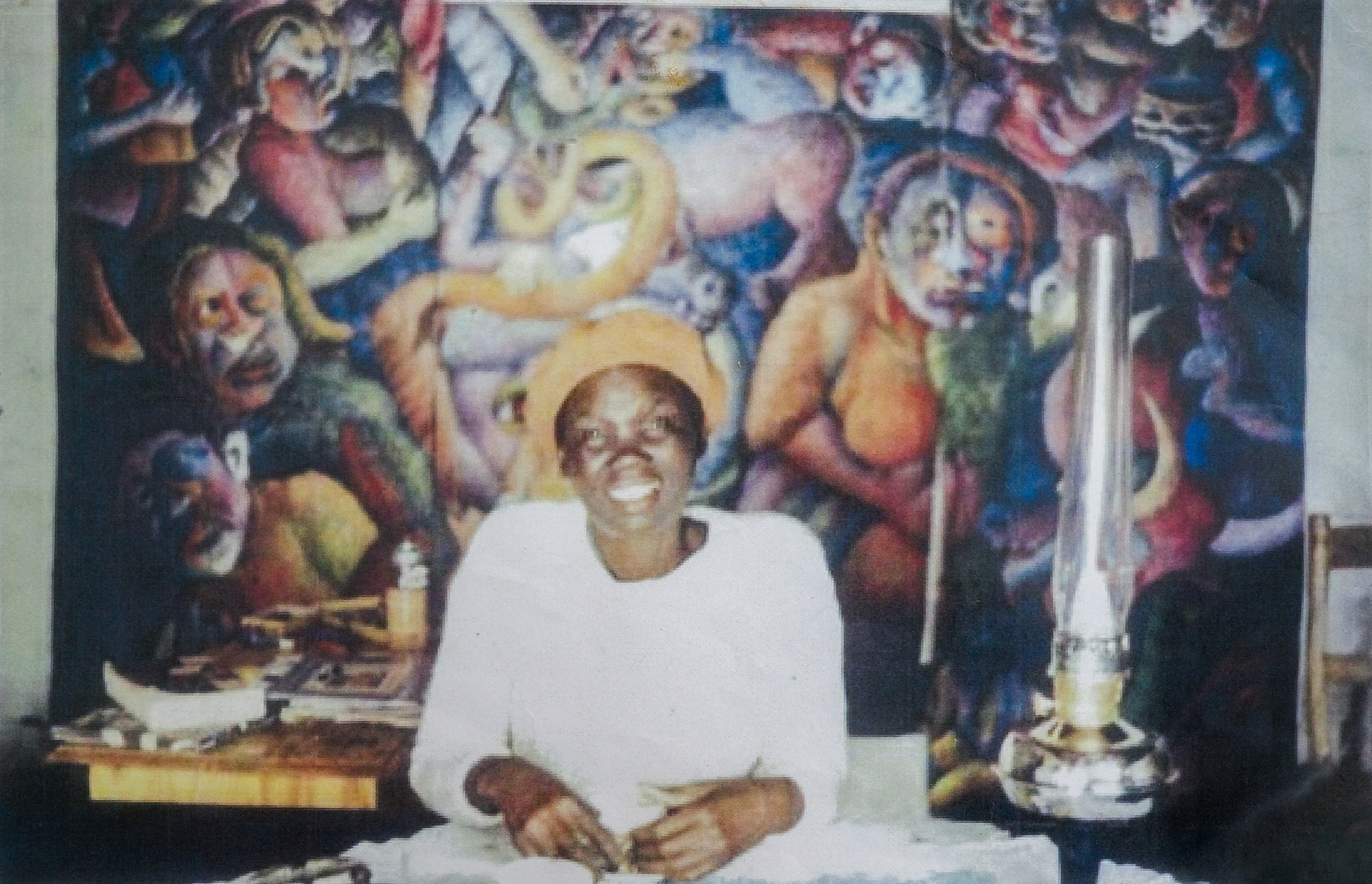
Traveling together in 1989, Ainslie, Koloane, and Sebidi were returning from the Pachipamwe II workshop in Matabeleland, Zimbabwe, when they were involved in a severe car crash. Ainslie lost his life, and Koloane and Sebidi sustained serious injuries. Sebidi was rushed to Baragwanath Hospital in Soweto, where she spent several weeks in recovery. It was during this time that she received a vision. Inspired by this divine intervention Sebidi set to work and produced an impressive oeuvre. It would be a momentous year in the life of the artist, who in 1989 became the first black woman to win the Standard Bank Young Artist Award. She won a Fulbright Scholarship to the United States that same year and was invited to be part of a group exhibition Bild/konst i södra Afrika (Art/Images in Southern Africa), which was shown at the House of Culture in Stockholm and toured the Nordic countries until May 1990.
Following this exposure, Sebidi was invited back to Sweden in 1991 to Nyköping Folk High School, a residential college for adult education south of Stockholm. The residency was to include workshops where she would meet with local artists and, significantly, hold a solo exhibition of her work. With this in mind Sebidi took some of her most important artworks with her to Sweden, where she met with artists and shared her experiences of South Africa with them.
The exposition, however, did not take place. Guaranteed that she would be invited back for a new date in the coming year, Sebidi entrusted her artworks to Pieter Dewoon at the Nyköping Folk High School and returned home. A year passed without any further mention of the exhibition. Frustrated, Sebidi requested that her artworks be returned to her. It was then that she was informed that her artworks had been stolen. Despite numerous efforts, including filing a police report and a search of the Nyköping Folk High School, her artworks were not found. Ongoing efforts since 1992 to trace the body of work, including correspondence with the Swedish embassy, newspaper articles, and TV reports, were to no avail. A little more than three decades later, in May 2023, Jesper Osterberg, the Nyköping Folk High School’s caretaker, was cleaning out a cupboard in the ceiling when he discovered Sebidi’s artworks concealed there. They were still in their original packaging.
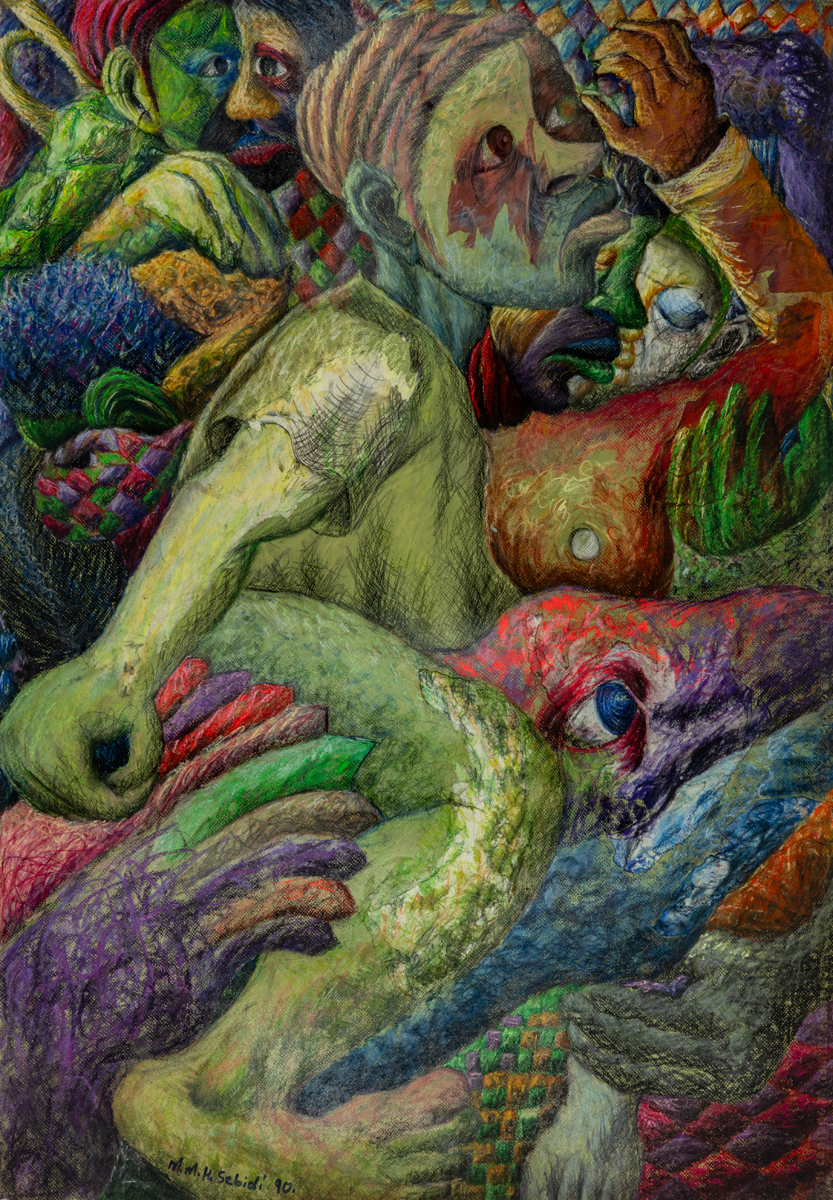
The year 1989 takes us back in time to a moment in South Africa’s history when Nelson Mandela was still behind bars, having served twenty-six years of his life sentence. The country’s townships were fueled with unrest and clashes between residents and the South African Defence Force. The found artworks contemplate those racially segregated times when community art centers such as FUNDA, FUBA, Johannesburg Art Foundation, and Community Arts Project were some of the only viable spaces where black artists could further their training.
This critical body of work from 1989–1991 reflects Sebidi’s journey between the rural and the urban, between tradition and modernity, and between the earthly and the spiritual. Human and animal forms overlap and jostle for space. Every inch of the surface is densely packed and bursting with movement and life; a reflection, perhaps, of the anguish in the townships then. Distorted faces with lopsided eyes and contorted noses viewed simultaneously from multiple angles are amplified in reds, blues, greens, ochres, and purples, intensifying the tension of the composition. One figure may sometimes reflect two heads or three; hands and limbs unite dissimilar characters. These configurations recall a connection to another world, of African spirituality and mythological fables, where animal characters are the chief protagonists guiding humans in their daily lives.
Twenty-eight artworks were returned and exhibited earlier this year under the title Ntlo E Etsamayang (The Walking House) at the University of Johannesburg Art Gallery from April 6 to May 17 and then at the Everard Read gallery in Cape Town from July 13 to 31. Four works still remain unaccounted for.
Riason Naidoo spoke with Helen Sebidi in Cape Town.
RN: How did you feel about seeing these artworks again for the first time since 1991?
MHS: I was brought up with a house inside me. When I grew up, I was told that, “we are building a house in you. When you travel the world you will meet other houses.” I went to Sweden in 1989 for the South African exhibition. Then in 1991, the exhibition was “lost.” The Swedish school where the artworks were lost offered me money. I refused. I was going to write it in my will what was to happen to my work when/if they found it.
I was with Bill Ainslie when we had the car accident, and I was taken by helicopter to Baragwanath Hospital. The doctors there said, “Who are you? Why do you come with a helicopter? Are you the wife of an ambassador or the wife of a king?”
I happened to be given voices in 1989—26 August—when artist Bill Ainslie passed away. While in hospital, a beautiful woman appeared in my dreams, with a black dress, ginger hair, makeup, and red roses. She said, “You African people, why do you run to European culture? Why? It is only blood and death.” She said, “You must go back to your culture.” I wanted to go to my mother. The voices said, “No, you must go back to your grandmother in the rural area.”
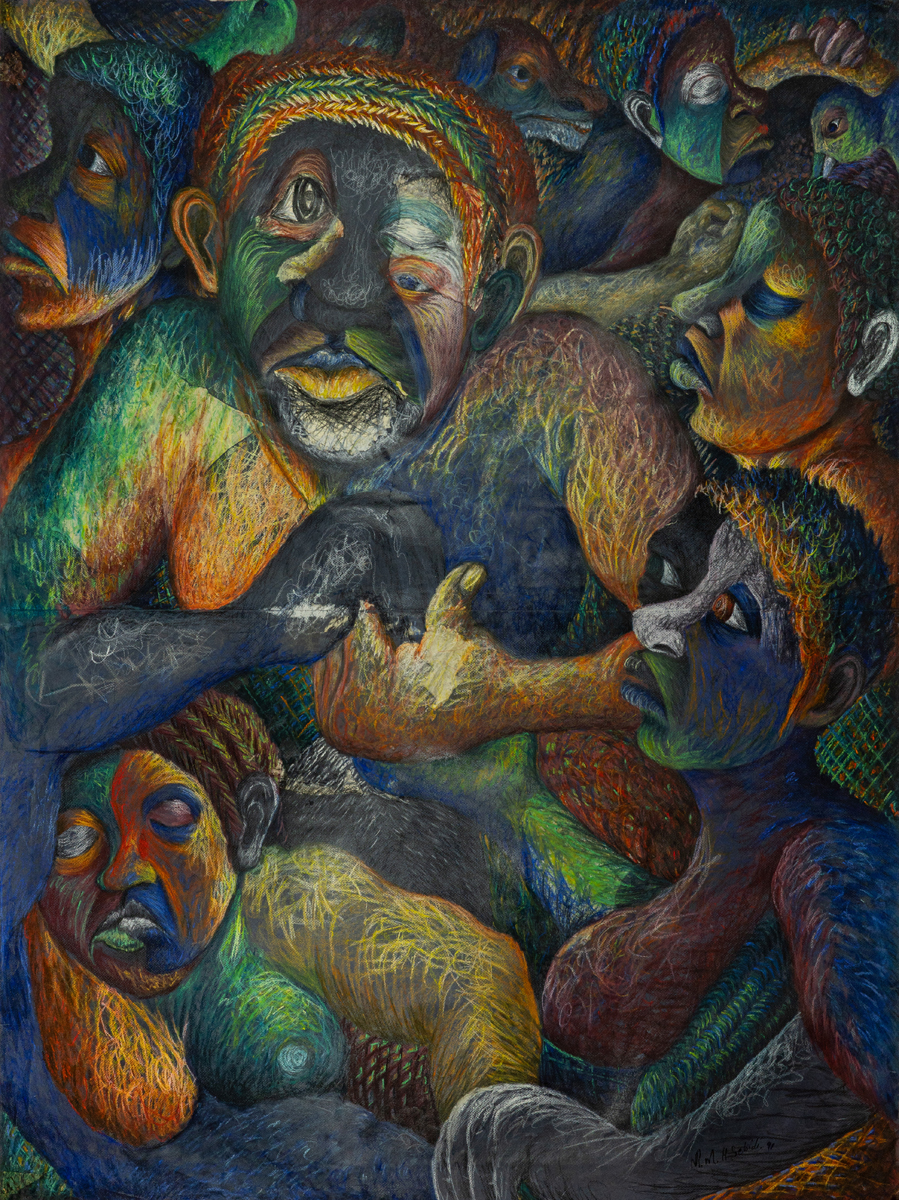
Later, I was seen as a threat by the doctors at Baragwanath. They thought I was a political activist. The voices told me I needed to get out of the hospital. I was in danger there.
Due to the accident, I was badly hurt with many broken bones. For about a month I was in this condition in hospital. I found Dr. Nthato Motlana’s phone number in my diary. I called him. He said, “Don’t talk anymore. I’ll be there in 20 minutes.” And before 20 minutes, he was at Baragwanath from Diepkloof. “You are lucky. Your ancestors are strong,” he said. “People are being killed there in the hospital.” He had fundraised in the US for clinics in Soweto. He took me to one of the clinics, where they gave me some medication.
RN: You mentioned previously that the artworks that you make do not belong to you but to those who have sent you. The honor is not yours. What do you mean by this?
MHS: We don’t own anything, we don’t. African land has a purpose. European land has a purpose. Everything has a purpose. We grew up not owning, and we grew up living off the earth. We didn’t know money, and we didn’t spend money. There was a flowerpot at our home in the rural area. When someone gave us money, we would put it into the flowerpot. For months and years, that money would remain there. Sometimes we would give someone a place to sleep because they were traveling from far or needed a place to rest. And one day when we were cleaning we realized that that money is not inside there anymore … hahaha! Oh! That man who visited … So, money did not concern us. We did a lot of exchanges. But we had to watch those that came from the towns and cities, because they came with nothing, but they left our place with lots of things, so much that they could not carry.
My grandmother was getting older. She was my responsibility. I thought, Let me take care of her …
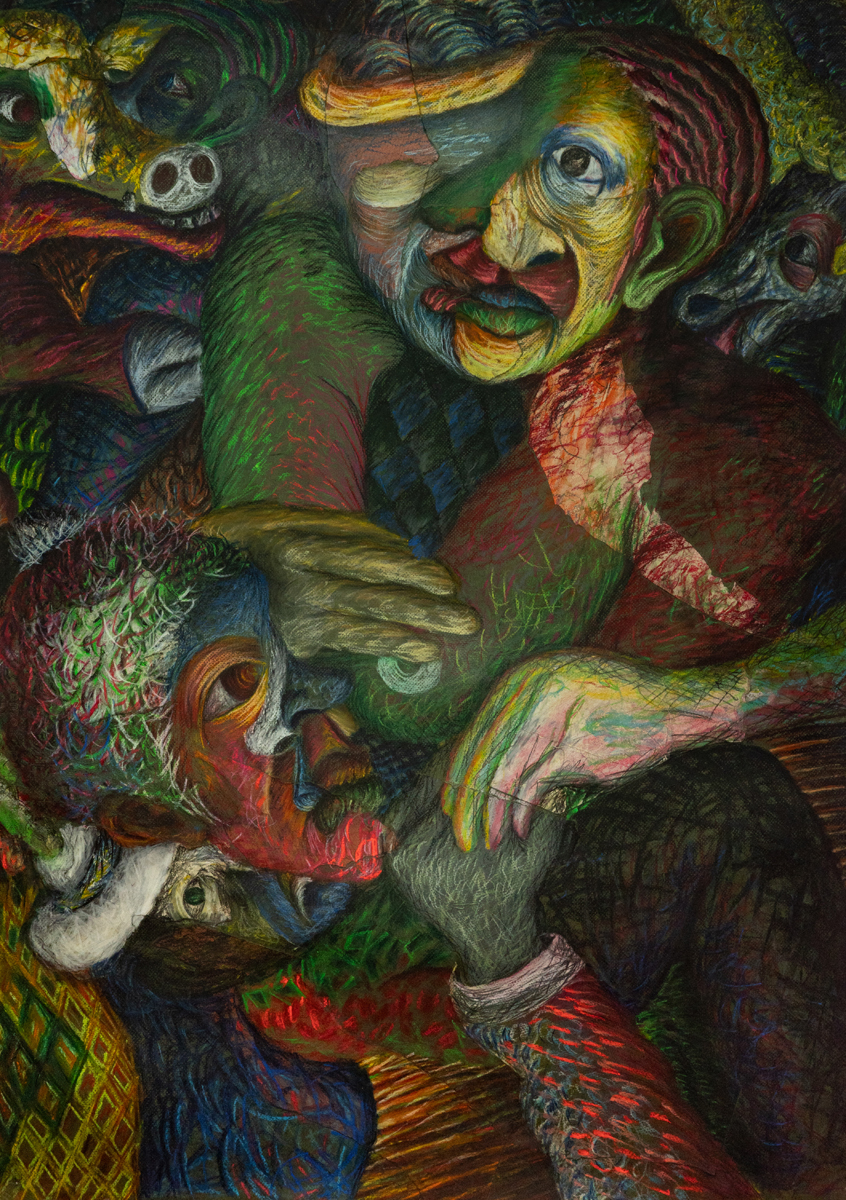
RN: Tell me about your grandmother
MHS: My grandmother said, “I build the home inside you … You must not get out of the home before you clean under your feet.”
RN: So, art for you is …
MHS: Not for me. Read the bush inside the tree. It’s another world. Read the animals. Through animals we read feeling and spirituality.
RN: Is art for you a connection with the spiritual world?
MHS: Europe was rural at one time too, like us. When they developed the cities, money came with exchange. They came dominating us with money. Our traditional leaders are nothing today. They are paper. Everything was taken from us. In Lady Selborne, outside Pretoria, where black people could own properties before apartheid—and where Mandela was boxing—they had this thing called “We see you.” And we also said, “We can see you too.” So art is a spiritual movement. Europe developed it quicker. Until we get our own understanding, only then we can be equal with Europe, and that house will be happy to knock on every door and be received.
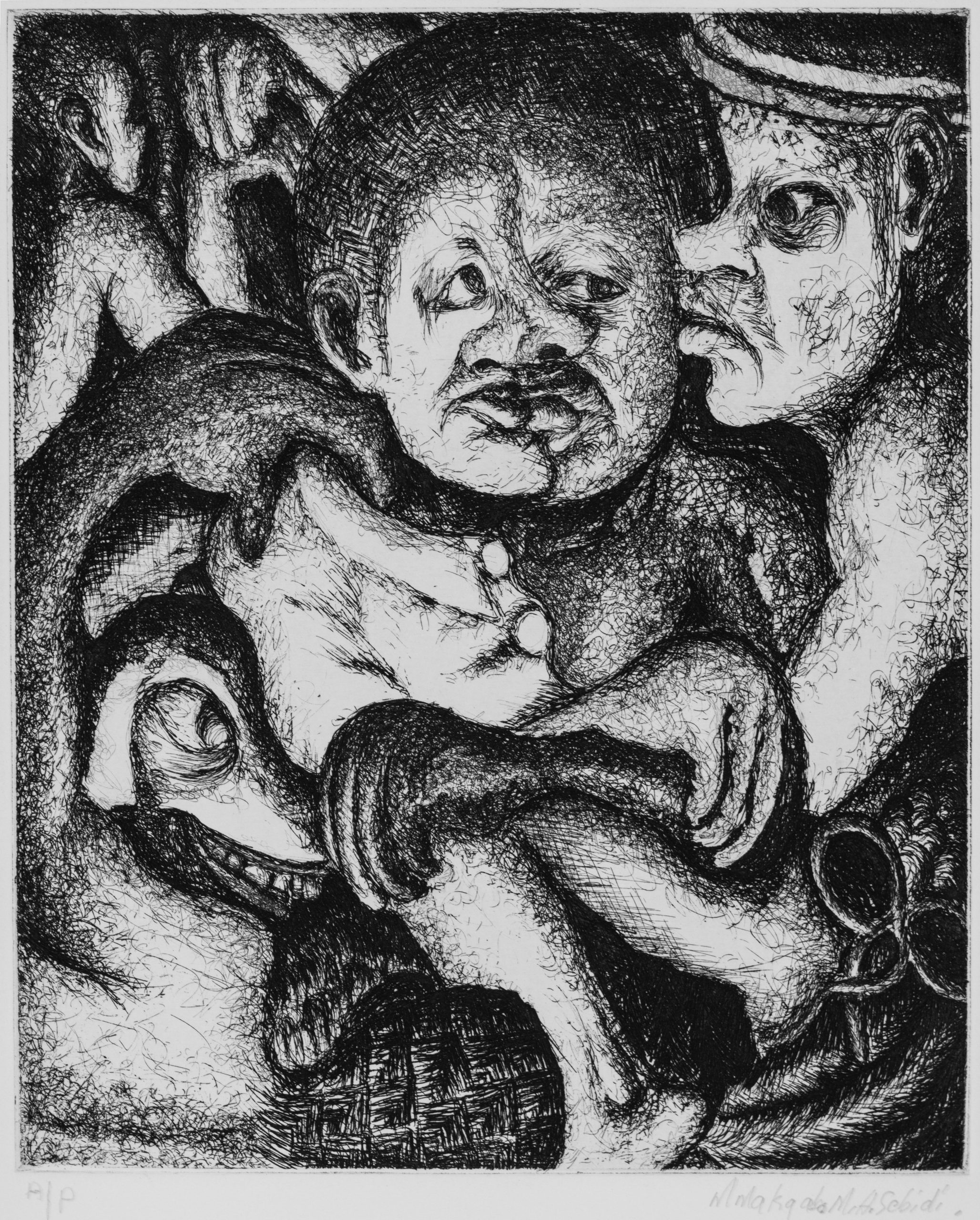
RN: I read that John Koenakeefe Mohl was your mentor?
MHS: In the early 1970s I was studying under Mohl, and my grandmother was ill. He said, “Go back and look after your grandmother and you can do some research. That research comes from an early people before your grandmother. Ask a lot of questions. Keep questioning them to find out more. I don’t want to see any more work from Johannesburg and the townships. You have a big work to do there.”
RN: There are two dominant Western influences or techniques I see in your work. One is the Pointillist technique—with the small dots—and the other is the portraits with different angles depicted simultaneously, much like Picasso and the Cubists. Who influenced you in your art?
MHS: On techniques, it’s all the patterns that we grew up with; beadwork, cow dung work, mud work. African people have been working on the spirit for a long time. Now they call this wall painting and sculpture. There is no Ndebele. We are Tswana. Our tongue has been changed.
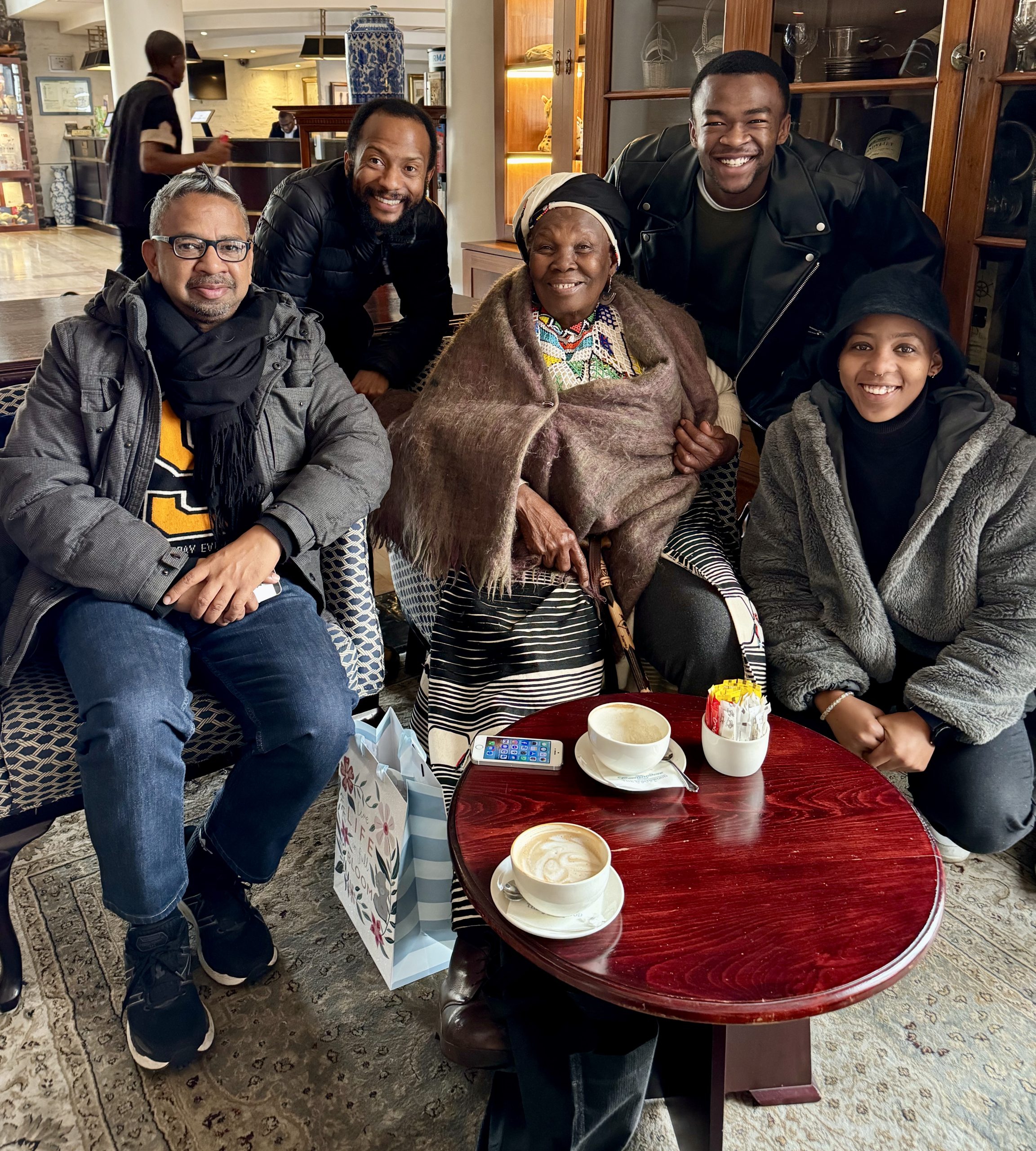
After Mr. Mohl passed away my grandmother guided me. She wanted us to always be working, and she found me always working. If someone visited us she did not want us to talk to them. She would protect us. We would make the tea and let her talk with the visitor while we continued with our work. She would do the talking. For 10 years I did that. After her passing away I felt that I was naked, empty. She was a social worker, a midwife—she did everything. With meeting Bill Ainslie I had this European influence in my work.
Mmakgabo Mmapula Mmangankato Helen Sebidi was born in 1943 in Marapyane near Hammanskraal in the Mpumalanga province. Her work is represented in private and public collections, including the South African National Gallery and the Smithsonian National Museum of African Art in Washington.
Riason Naidoo is an independent curator, writer, researcher and artist. He lived in Paris from 2018-2023, where he curated: the public art project "neuf-3" (2021-2023) in the suburb of Saint-Denis. Naidoo directed the South African National Gallery for six years (2009-2015). He is currently a Mellon Turning the Tide Doctoral Research Fellow at the Institute for Humanities in Africa (HUMA), University of Cape Town.
This piece was originally published by Africa Is a Country.

